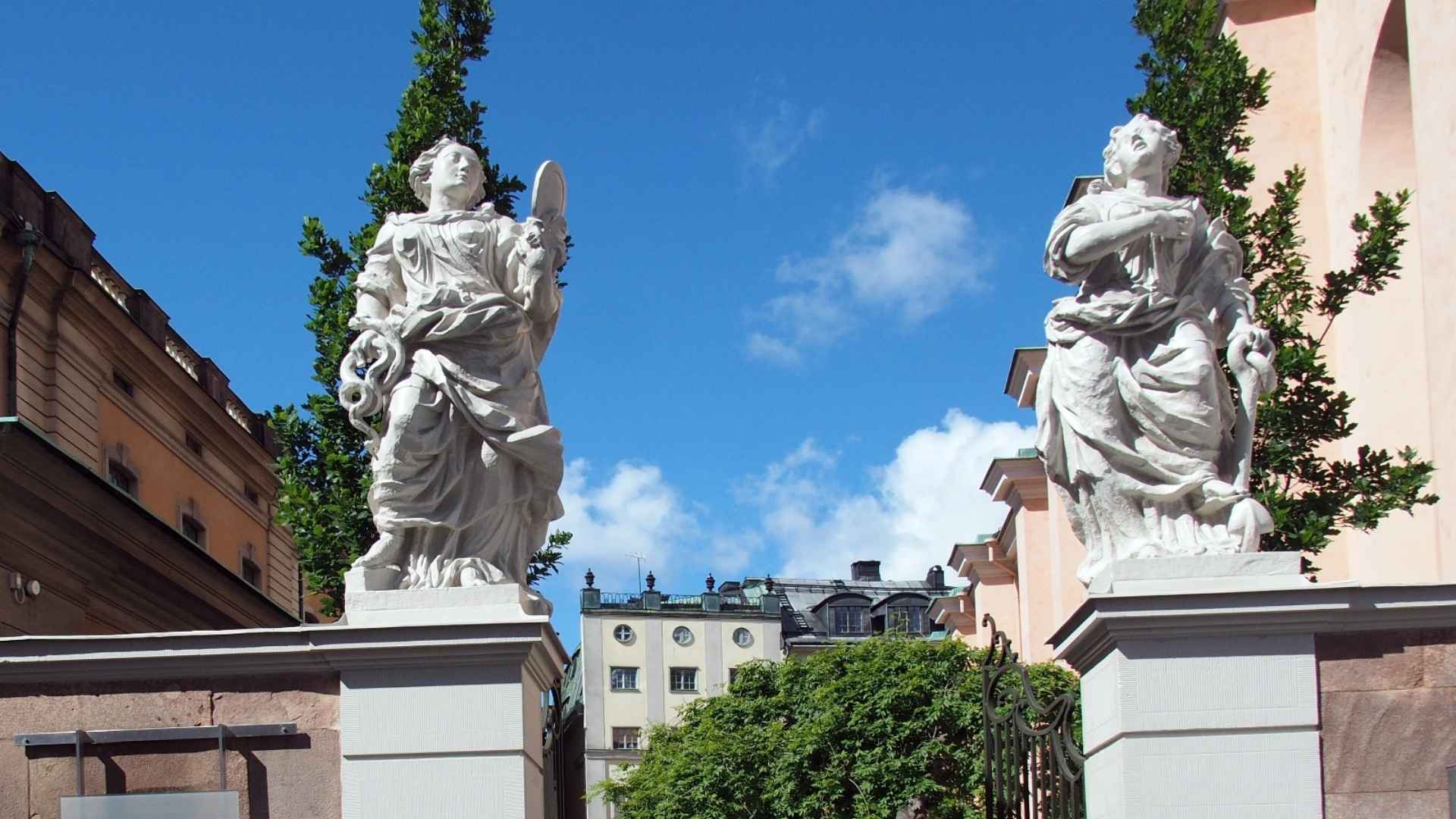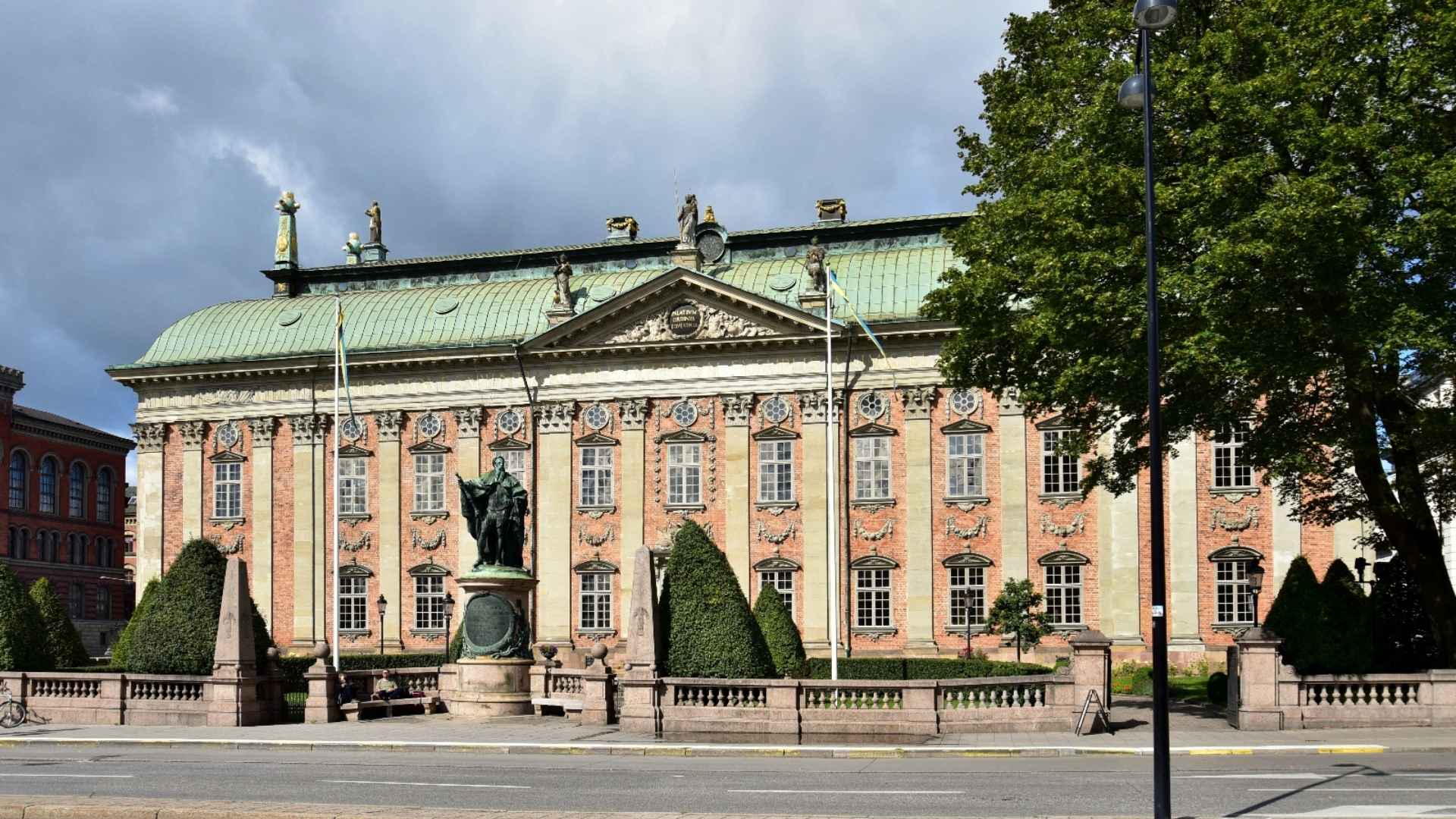TLDR
Stenbock Palace is the Swedish Prime Minister's office in Gamla Stan. Built in the 1640s, it's a working government building, not a museum. You can't tour inside but the exterior and location are impressive.
Walking past Stenbock Palace on Riddarholmen, you might not realize you're looking at Sweden's seat of executive power. Unlike flashy government buildings in other capitals, this 17th-century palace blends seamlessly into Stockholm's old town.
After several visits to Gamla Stan, I've learned that Stenbock Palace rewards those who appreciate understated architecture and political history more than those seeking grand tourist attractions.
The palace sits among some of Stockholm's most significant historical buildings, making the surrounding area more interesting than the palace itself.
What is the story behind Stenbock Palace?

Stenbock Palace was built in the 1640s as a private residence for Count Gustaf Otto Stenbock, a Swedish military commander. The original baroque palace underwent significant modifications over the centuries. In 1889, the building became government property after being purchased from the Stenbock family.
It served various administrative functions before becoming the Prime Minister's office and residence in the 1980s. Today it houses the Office of the Prime Minister and is where the Swedish government holds its weekly cabinet meetings every Thursday morning.
The palace represents continuity in Swedish governance, blending centuries-old architecture with modern political administration.
Can you visit Stenbock Palace?
No, you cannot visit the interior of Stenbock Palace. It's an active government building where Sweden's Prime Minister works and the cabinet meets, so it's closed to tourists.
You can walk around the exterior and photograph the building from the street. The palace sits on the small island of Riddarholmen, connected to Gamla Stan by bridges. Security is present but discreet unless there's a government event.
The best view is from the courtyard area between the palace and Riddarholmen Church. Public access to the grounds is limited compared to royal palaces. If you want grand interiors, visit the Royal Palace instead.
What is the history of Stenbock Palace?
The palace's history reflects Sweden's evolution from noble estates to democratic governance. Count Stenbock commissioned the original building in the mid-17th century during Sweden's period as a major European power.
The architectural style combined baroque elements with Swedish building traditions. Various noble families owned it over the centuries, each making modifications. The Swedish state's acquisition in 1889 marked its transition to public service. Renovations in the 1980s adapted it for modern government needs while preserving historical elements.
The palace survived Stockholm's various fires and wars relatively intact. Its transformation from aristocratic residence to political nerve center mirrors Sweden's democratic development.
When was Stenbock Palace built?
Stenbock Palace was constructed in the 1640s, making it nearly 400 years old. The exact completion date is somewhat unclear since construction happened in phases typical of that era.
The building we see today incorporates renovations from multiple centuries, particularly significant changes in the 18th and 19th centuries. The 1980s renovation modernized the interior for government operations while maintaining the exterior's historical appearance.
The palace is younger than many Gamla Stan buildings but old enough to represent Stockholm's baroque period. Its age matters less than its continuous use as an important building throughout Swedish history.
What makes Stenbock Palace significant?

Stenbock Palace's significance comes from its current function rather than its architecture. This is where Sweden's government makes decisions affecting the country and its international relations. The weekly Thursday cabinet meetings here determine national policy. It's also where the Prime Minister works daily, meeting with ministers, diplomats, and officials.
For Swedish politics enthusiasts, seeing this building provides tangible connection to current events. However, its significance is more conceptual than visual since you can't see inside. The understated nature reflects Swedish political culture's preference for modesty over grandeur. It's meaningful if you care about government and institutions.
How do you get to Stenbock Palace?
Stenbock Palace sits on Riddarholmen island, accessible via several bridges from Gamla Stan. From Stockholm Central Station, take the metro to Gamla Stan station (about 5 minutes), then walk west across Gamla Stan toward the water (10-minute walk).
Cross the Riddarholm Bridge to reach the island. The palace is immediately visible once you're on Riddarholmen. You can also walk from the Royal Palace area, which takes about 8 minutes through scenic old town streets. Buses 3, 53, and 76 stop near Riddarhuset, a 3-minute walk away.
The area is compact and walkable. Use maps since Gamla Stan's medieval streets can be confusing.
What's the best time to visit?
Visit Stenbock Palace during weekday mornings or late afternoons for the best experience. Thursday mornings are interesting since that's when the cabinet meets, though you won't see anything beyond perhaps extra security and official cars.
Summer brings crowds to Gamla Stan, making Riddarholmen feel relatively quiet since fewer tourists venture there. Winter offers dramatic atmosphere with snow and fewer people, though it's cold. Early morning light provides good photography conditions. The palace looks attractive in evening light but many nearby attractions close early.
Since you're only viewing from outside, weather matters more than time of day. Plan to spend 15-20 minutes unless you're exploring the entire island.
What else should you see nearby Stenbock Palace?
Riddarholmen and Gamla Stan pack remarkable historical sites into a small area. Beyond Stenbock Palace, essential nearby attractions include:
- Riddarhuset (House of Nobility) with its impressive baroque architecture
- Riddarholmen Church where Swedish monarchs are buried
- Stortorget, Gamla Stan's main square with colorful buildings
- Stockholm Cathedral, the city's oldest church
- Royal Palace, one of Europe's largest palaces still in use
- Nobel Prize Museum showcasing Nobel laureate achievements
The entire area is walkable in 2-3 hours if you're moving efficiently. The compact medieval street layout means attractions cluster together. Riddarholmen itself takes 30 minutes to explore thoroughly. Gamla Stan rewards wandering beyond main sights.
Is it worth seeing Stenbock Palace?

Worth seeing depends entirely on your interests. If you're fascinated by government, political history, or Swedish institutions, yes, seeing where the Prime Minister works adds context to understanding modern Sweden.
The building itself is attractive but not spectacular compared to Stockholm's royal palaces and churches. The real value comes from being in the area, which includes several more interesting attractions. Visit Stenbock Palace as part of exploring Riddarholmen rather than as a standalone destination. Photography enthusiasts will appreciate the building and surroundings.
But if you're short on time in Stockholm, prioritize the Royal Palace, Vasa Museum, or Skansen instead. Stenbock Palace works best for visitors doing thorough Gamla Stan exploration.
What should you know before visiting?
Understand that Stenbock Palace is purely an exterior viewing experience. Don't plan to spend much time here since there's no interior access or guided tours. The area has security cameras and occasional police presence because it's a working government building.
Taking photos from public areas is fine but respect any restricted zones. The palace doesn't have visitor facilities like cafes or restrooms. Nearby Gamla Stan has plenty of services but Riddarholmen itself is quiet. The island has limited commercial activity so bring water if needed.
Combine your visit with other Riddarholmen and Gamla Stan attractions to make the trip worthwhile. The surrounding area is more rewarding than the palace itself.
Explore Stockholm with StoryHunt
Want to discover Stockholm's historic sites with expert audio guidance? StoryHunt's Personal Tour Guide creates customized audio walks through Gamla Stan and Riddarholmen based on your interests - whether that's royal history, government buildings, medieval architecture, or Swedish culture.
The interactive map guides you through the old town's winding streets with stories about palaces, churches, and institutions that shaped Sweden. Explore at your own pace, pause for fika breaks, and create an experience shaped by your curiosity rather than following rigid tour schedules.

.webp)











.avif)





